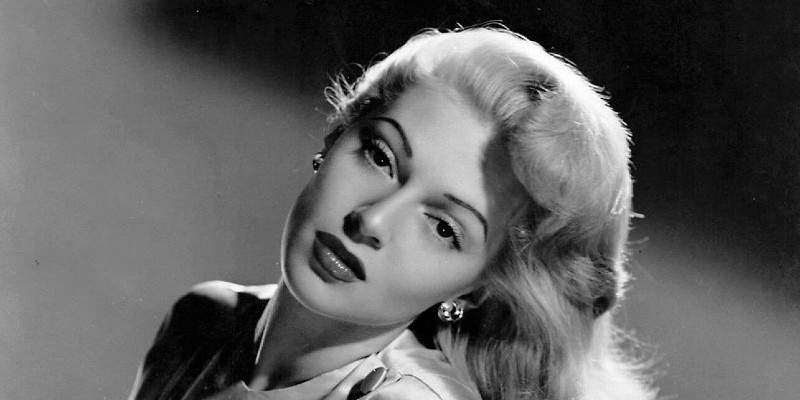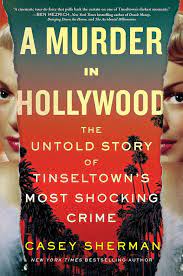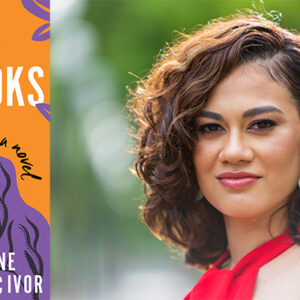Mickey Cohen walked under the drooping fronds of a large palm tree toward the Clover Club at 8477 Sunset Boulevard with a shotgun tucked under his coat. The place was owned by restaurateur Eddie Nealis, and its management catered to film studio executives and Hollywood’s top stars. The Clover Club was located along a sparse stretch of the road, just beyond Los Angeles’s city limits. From the street, the place looked uninviting and fortress-like. Inside, however, the Clover Club was outfitted with hidden gambling rooms where celebrities could bet against the house. Producers like David O. Selznick lost vast amounts of money on a weekly basis. The club also had one-way mirrors to signal card dealers of impending raids so the gaming tables could be flipped over at a moment’s notice.
Cohen led a small group of gangsters through the back door and into a large gambling den where they all showed their weapons and demanded that the patrons put their money and jewelry on the tables. “I had the stick [shotgun] on everybody. Everyone else had pistols,” Cohen recalled.
He had targeted the nightclub under orders from Benjamin “Bugsy” Siegel because Nealis had refused to hand over his profits to the Syndicate. During the stickup, Cohen noticed a beautiful young blonde standing nervously next to big-band trumpeter Harry James. Cohen did not see the musician as a threat, so he shifted his steely gaze to the other well-dressed men in the room. The heist was over in a few short minutes, and Cohen then fled with the other members of his gang.
Despite the brazen robbery ordered by Siegel and carried out by Cohen, Nealis refused to give up control of the Clover Club. Cohen was dispatched once again, this time to kill the club’s security man, a notorious Irish gangster named Jimmy Fox. Cohen shot him up but failed to kill him. Still, the message had been sent, and Nealis relinquished club control to Siegel and fled to Mexico.
Cohen thought back to the night of the original raid, as he could not get the image of the beautiful blonde who had placed her diamond necklace into his fedora out of his mind.
“Who was that gorgeous woman we just heisted?” Cohen asked.
“That was Betty Grable,” one of the henchmen replied.
At twenty-two years old, Grable was pure Hollywood gold. She worked out of the 20th Century Fox lot and would later become known more for her pinup shots than for her screen performances. Cohen did not know it, but Betty Grable could have been his biggest score at the Clover Club, as her legs would soon be insured for $1 million in a publicity stunt orchestrated by 20th Century Fox.
The cross-pollination between Hollywood glamor and gangsterism was becoming more commonplace in Los Angeles. Movies like Little Caesar and The Public Enemy starring James Cagney put millions of dollars in the studio coffers while also depicting hardened criminals as big-screen antiheroes. Screenwriters lifted their ideas from the gruesome headlines in newspapers from cities like Chicago and New York, but there was very little organization involving the crimes happening on a daily basis in LA. While Mexican youth gangs calling themselves palomillas, or flocks of doves, operated with limited success in Boyle Heights, the Italian Mafia had depended on a sleepy-eyed killer from Corleone, Sicily, to seize control of all vice operations being run out of Los Angeles. His name was Jack Ignatius Dragna.
A former soldier in the Italian army, Dragna had taken over the rackets in LA after the previous mob boss, Giuseppe “Joe Iron Man” Ardizzone disappeared and was declared dead. Dragna operated a 538-acre vineyard in the nearby hills and ran a floating casino ship called Monfalcone. Born in a Mafia stronghold before the turn of the century, Dragna had Sicilian blood, but he lacked the brains to expand the mob’s operations in Los Angeles. His LA outfit was known as “the Mickey Mouse Mob.” The Syndicate, which operated mainly out of New York and was made up of notorious mobsters like Al Capone, Charles “Lucky” Luciano, Meyer Lansky, Frank Costello, and others, sent one of their own to the West Coast to get Dragna in line or get rid of him altogether. Bugsy Siegel was their handpicked emissary. Siegel was even more dangerous than Dragna, and his handsome movie star looks made him a natural fit for Hollywood.
Siegel was already an underworld legend by the time he reached Los Angeles. He was born in 1906 in a dreary, overcrowded tenement on Cannon Street in New York’s Lower East Side. The boy grew fast and was taller and stronger than most of the other kids in his Jewish neighborhood.
By the time he was twelve years old, Benny, as he was then known, put his muscles to work extorting protection money from pushcart peddlers and threatening to poison carriage horses if their drivers did not pay up. Siegel’s fearsome reputation spread quickly through the Lower East Side, where terrified merchants began referring to the preteen in hushed tones as a vilde chaye, Yiddish for “wild animal.” At sixteen, Siegel partnered with a slightly built Jewish immigrant from Grodno, Russia, named Meyer Lansky. They formed a small gang and fought constantly with their Irish and Italian rivals. Siegel was skilled with his fists and quick to pull a weapon on his foes.
“He was young, but very brave. He liked guns,” Lansky recalled years later.3 “His big problem was that he was always ready to rush in and shoot. No one reacted faster than Benny.”
When he would get angry, the handsome Siegel would go “bug-eyed” and unleash a torrent of bullets on his enemies, earning him the nickname “Bugsy,” which no one ever dared to call him to his face. When the FBI began to track him years later, the Bureau called Siegel “insane along certain lines.”
Jack Dragna may have been worried about Siegel’s arrival in Los Angeles, but Mickey Cohen did not seem to care. Cohen had been ordered to report to Siegel and serve as his number two for the Syndicate’s plot to strong-arm Dragna.
“Jack [Dragna] wasn’t pulling [in] the counties or [getting] the political picture together,” Cohen later explained. “There wasn’t even a casino open [on land]. There was no combination, everyone was acting independently. The organization had to pour money on Dragna at all times. So Benny come[s] out here to get things moving good.”
But Cohen was in no rush to work for his fellow Jewish mobster from New York.
If I get in touch with Benny too quickly, he’ll lock me up in his gang right away, Cohen thought to himself. I won’t be able to plan any scores. I have to get a hold of some money, and I have some things to do.
Operating independently and with a flair for the dramatic, Cohen targeted an LA gambling joint called the Continental Press, where bets were made on horse races over a wire service that telegraphed and reported race results. The gambling parlor had thirty-five telephones for incoming and outgoing bets. Twenty-five men worked the phones inside, while two armed sheriffs stood guard at the door. Cohen knocked casually on the front door. As it opened, he pushed his way in with a shotgun.
“You cocksucker,” he told one of the sheriffs. “You just move and you’re gone!”
Next, Cohen eyed a man who claimed that he had only come in to place a bet. The guy was carrying a large satchel. Cohen pointed his shotgun at the bagman.
“You want it in the head, quick? Or slow in the belly?” he asked.
The bagman handed over the satchel, which contained $22,000 in cash.
Cohen had no idea that Siegel, Lansky, and the Syndicate all had a stake in the Continental Press by way of another “made man,” a Mafia lieutenant named Johnny Rosselli.
Siegel sent out word that he wanted to meet Cohen the next afternoon. Cohen strolled into the locker room at the Hollywood YMCA, where Siegel was getting ready to work out. Cohen brought a friend as backup. Siegel stared right through Cohen’s companion and told him to take a walk. Now, Cohen was all alone with Siegel.
Siegel immediately dropped the menacing posture and began to laugh out loud. “I heard you were a fucking nut, but how crazy can you be?” he asked Cohen. “You were supposed to call me right away, weren’t ya?”
“Yeah, I didn’t think it was that important. I wanted to see my family. I’ve been busy.”
Siegel shook his head. “Yeah, I know you’ve been goddamned busy!” He demanded that Cohen kick back the money he had stolen from the mob.
Cohen refused to back down. “Let me tell you something right now. When I go on a score, I put up my life and liberty. I wouldn’t kick back to my own mother!” Cohen turned on his heel and walked out of the locker room.
Siegel could have chased after him with his pistol out and bullets flying, but the gangster played it cool. There was a lot to like about Mickey Cohen.
Instead of an armed showdown, Siegel called another meeting, this time at his lawyer’s office.
Jerry Giesler was the most powerful defense attorney in Los Angeles and a well-known “fixer” to the stars. Giesler (pronounced geese-ler) had earned another nickname in Hollywood, “the magnificent mouthpiece.” But unlike his clients, including Siegel, Giesler was not flashy or charismatic. Born and raised in the small town of Wilton Junction, Iowa, the attorney was balding, weak chinned, and quiet. He spoke in a reedy voice, dressed sedately in conservative gray suits, and wore horn-rimmed glasses. But if a bad-boy actor, corrupt studio head, or conniving actress found themselves in trouble with the law, they would almost immediately call their publicist with the frantic plea “Get me Giesler!”
The lawyer was in high demand. In the past few years, he had been involved in two of Hollywood’s biggest criminal cases. In 1929, movie producer and theater operator Alexander Pantages was arrested and charged with raping a seventeen-year-old aspiring actress named Eunice Pringle. Pantages owned nearly one hundred vaudevillian theater palaces across the United States and Canada and was a business rival of future presidential patriarch Joseph P. Kennedy. Pringle claimed that Pantages had attacked her in a side office at one of his theaters in downtown Los Angeles, located at Seventh and Hill Streets. Pringle had gone to the meeting to talk with Pantages about steps to further her career. She ran out of the theater minutes later, half-naked and delirious. Pantages was convicted of the crime, but Giesler got the conviction overturned on appeal. Following that trial, he was hired by Hollywood director and music man Busby Berkeley after he plowed his car into another vehicle while driving drunk along LA’s Roosevelt Highway, killing two people. Despite evidence from witnesses who said Berkeley reeked of alcohol at the time of the crash, Giesler won an acquittal after two hung juries.
Giesler loved to defend both the famous and the infamous, and there was no bigger mob star in Hollywood at that moment than Benjamin “Bugsy” Siegel.
At their meeting with Mickey Cohen, Giesler helped to negotiate the return of a stickpin that Cohen had swiped from a thug during the Continental Press heist.
“It’s his family heirloom, it’s the thing the guy cannot replace,” Siegel explained to Cohen. “You’re not gonna get nothing for it anyway.”
Nodding at both Siegel and Giesler, Cohen gave in. “All right, don’t worry. I’ll get it back for ya.”
Giesler and Cohen formed an unwritten pact at the meeting—one that would not be broken until years later when both men got involved with Lana Turner.
___________________________________
Excerpted from A Murder in Hollywood by Casey Sherman. © 2024 by Casey Sherman. Used with permission of the publisher, Sourcebooks, LLC. All rights reserved.


















